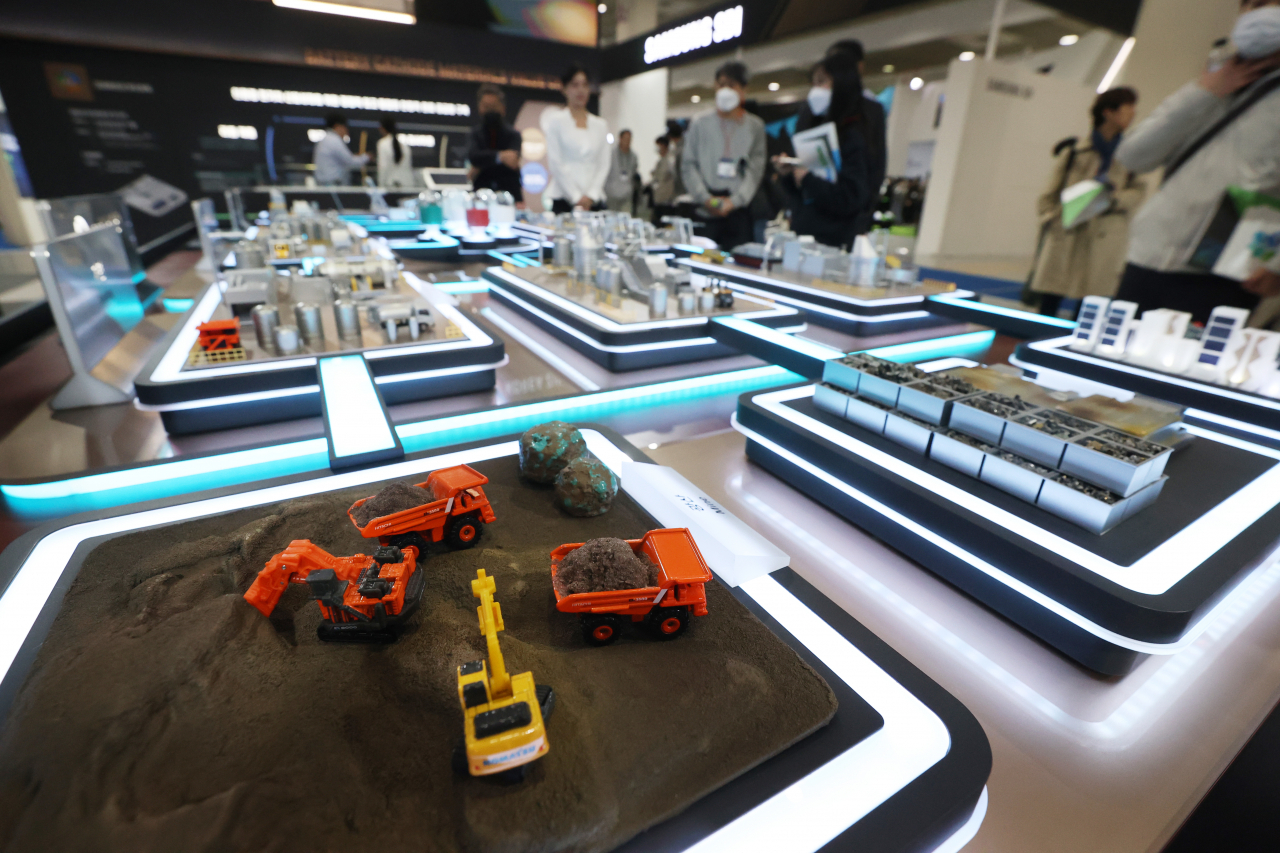 |
Visitors look at the model of how secondary batteries are made at InterBattery 2023 held at Coex in Seoul on March 15. (Yonhap) |
South Korean battery makers are breathing a sigh of relief as the US Treasury Department’s newly unveiled guidance on battery sourcing does not require them to change their current production process right away to receive the US government’s subsidies provided to electric vehicle buyers under the Inflation Reduction Act.
Under the IRA, EV and battery makers have to meet certain requirements for both the critical minerals and battery components contained in the vehicle to be eligible for a $7,500 tax credit. The US Treasury Department on Friday announced the detailed requirements that will take effect from April 18.
According to the announcement, in order to receive the $3,750 credit for this year, 40 percent of critical minerals contained in an EV battery must be extracted or processed in the US; a country with which the US has a free trade agreement; or be recycled in North America. The applicable percentage will increase by 10 percent after each year up to 80 percent in 2027.
For the other $3,750 of the tax credit requirement, 50 percent of the battery component must be manufactured or assembled in North America. The percentage will go up to 60 percent for 2024 and 2025. Starting in 2026, the percentage will increase by 10 percent after each year up to 100 percent in 2029.
The guidance defined powders of cathode and anode active materials as constituent materials, while designating cathode and anode electrodes as battery components. Korean battery firms produce constituent materials at their domestic facilities and manufacture battery components in North America, finding themselves in a valid position to receive the IRA benefits without revising their production process.
The Korean government and battery industry welcomed the US Treasury Department’s announcement. The Ministry of Trade, Industry and Energy said in a statement that a lot of uncertainties were resolved with the US, and that the Korea-US battery supply chain cooperation can be strengthened. The Korea Battery Industry Association said that requests from the Korean industry and government were reflected in the US announcement and the battery supply chain cooperation between the two countries have become a win-win opportunity.
Despite the optimistic announcement at the moment, there are still lingering questions about the IRA’s future impact on the Korean battery industry.
The US government has not disclosed details about the advanced manufacturing production credit, or AMPC, which includes a $35 tax credit per 1 kilowatt-hour produced by a battery cell and a $45 tax credit per 1 kWh battery module manufactured in North America.
If Korean battery makers that operate or will open battery-producing sites in the US -- LG Energy Solution, SK On and Samsung SDI -- were eligible for the AMPC, they could receive subsidiaries of up to 15 trillion won ($11.4 billion) in total. Considering the production capacities of each company, LG Energy Solution is expected to receive 10 trillion won in government incentives, while SK On and Samsung SDI are predicted to gain about 4 trillion won and 1 trillion won, respectively.
The announcement also did not elaborate on what countries constitute “foreign entity of concern,” or FEOC. Battery components and critical minerals related to FEOCs will not be able to receive the tax credit from 2024 and onward. If China is included in the banned list later, Korean battery makers will have to look for other sources of raw materials.







![[Today’s K-pop] Blackpink’s Jennie, Lisa invited to Coachella as solo acts](http://res.heraldm.com/phpwas/restmb_idxmake.php?idx=644&simg=/content/image/2024/11/21/20241121050099_0.jpg)